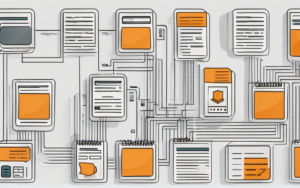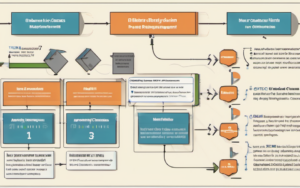Blockchain technology is revolutionizing various industries, offering a robust solution to combat the pervasive problem of fraud. Its inherent security features make it a powerful tool for ensuring data integrity and trust, drastically reducing vulnerabilities exploited by fraudulent activities. Let’s delve into how this innovative technology works.
1. Introduction
1.1 The Rise of Blockchain Technology
The emergence of blockchain technology has been nothing short of transformative. Initially known for its role in cryptocurrencies like Bitcoin, its potential extends far beyond digital money. Blockchain’s decentralized and secure nature is attracting attention from diverse sectors grappling with fraud and data integrity issues. This rise is fueled by a growing need for transparent and trustworthy systems.
1.2 The Problem of Fraud
Fraudulent activities cost businesses and individuals billions annually. From financial scams and identity theft to supply chain counterfeiting and data breaches, the impact is significant. Traditional methods of fraud prevention often prove insufficient, highlighting the need for innovative solutions like blockchain technology. The consequences of fraud extend beyond financial losses, damaging reputations and eroding public trust.
2. Understanding Blockchain Basics
2.1 Decentralization
Unlike traditional centralized databases, blockchain technology is decentralized. This means that data isn’t stored in a single location, making it highly resistant to single points of failure and manipulation. Information is distributed across a network of computers, enhancing security and resilience against attacks. This decentralization is a core tenet of blockchain’s fraud-prevention capabilities.
2.2 Immutability
Once data is recorded on a blockchain, it cannot be altered or deleted. This immutability is achieved through cryptographic hashing and linking of blocks, creating a permanent and auditable record. Any attempt to tamper with the data would be immediately detectable, significantly deterring fraudulent activities. This characteristic is crucial for maintaining data integrity.
2.3 Transparency
While maintaining individual privacy, blockchain technology offers a high level of transparency. All transactions are recorded publicly and cryptographically secured, allowing authorized parties to verify the authenticity and integrity of the data. This transparency enhances accountability and trust within the system. This open ledger acts as a deterrent against fraudulent behavior.
3. How Blockchain Prevents Fraud
3.1 Secure Transactions
3.1.1 Cryptographic Hashing
Blockchain utilizes cryptographic hashing to link blocks of data. Each block contains a unique cryptographic hash of the previous block, forming a chain. Any alteration to a single block would change its hash, breaking the chain and making the alteration immediately apparent. This mechanism ensures data integrity.
3.1.2 Digital Signatures
Digital signatures provide authentication and non-repudiation. They verify the identity of the sender and ensure the data hasn’t been tampered with during transmission. This prevents unauthorized transactions and ensures the authenticity of the information. These signatures are crucial for secure blockchain interactions.
3.2 Auditable Records
The immutable and transparent nature of blockchain creates a comprehensive audit trail. Every transaction is recorded and verifiable, making it easier to detect and investigate fraudulent activities. This significantly reduces the risk of undetected fraud and enhances accountability. This auditability is a key differentiator from traditional systems.
3.3 Reduced Counterparty Risk
Blockchain reduces reliance on intermediaries, minimizing the risk of fraud associated with third-party involvement. Smart contracts, self-executing agreements on the blockchain, automate transactions and eliminate the need for trust in intermediaries. This automated process minimizes the opportunity for manipulation.
4. Real-World Applications of Blockchain in Fraud Prevention
4.1 Supply Chain Management
Blockchain can track products throughout their journey, preventing counterfeiting and ensuring product authenticity. This enhanced traceability improves transparency and accountability, reducing the risk of fraudulent products entering the market. This application addresses the challenges of “blockchain technology prevent fraud” directly.
4.2 Financial Services
Blockchain offers secure and transparent cross-border payments, reducing the risk of fraud in international transactions. Smart contracts automate processes, minimizing human error and the potential for manipulation. This application directly addresses concerns regarding “how blockchain combats fraud”.
4.3 Healthcare
Blockchain can secure patient medical records, ensuring data integrity and privacy. This reduces the risk of medical record fraud and unauthorized access. This implementation demonstrates the “benefits of blockchain for fraud prevention”.
5. Challenges and Limitations
5.1 Scalability
Handling a large volume of transactions can be challenging for some blockchain networks. Scalability remains a concern as the adoption of blockchain technology increases. Improvements in network architecture and consensus mechanisms are crucial to address this challenge.
5.2 Regulation
The regulatory landscape surrounding blockchain technology is still evolving. Clear and consistent regulations are needed to foster innovation while mitigating potential risks associated with its usage. This lack of clarity presents a significant hurdle to widespread adoption.
The future of blockchain in fraud prevention is bright. As technology matures and regulations evolve, we can expect to see wider adoption across various sectors. The inherent security features of blockchain technology are invaluable in the fight against fraud, promising a more transparent and trustworthy future. Embracing this technology is crucial for organizations looking to enhance their security posture and protect themselves against increasingly sophisticated fraudulent activities. Start exploring the possibilities of blockchain integration today and take a proactive step toward safeguarding your business and its valuable data.




